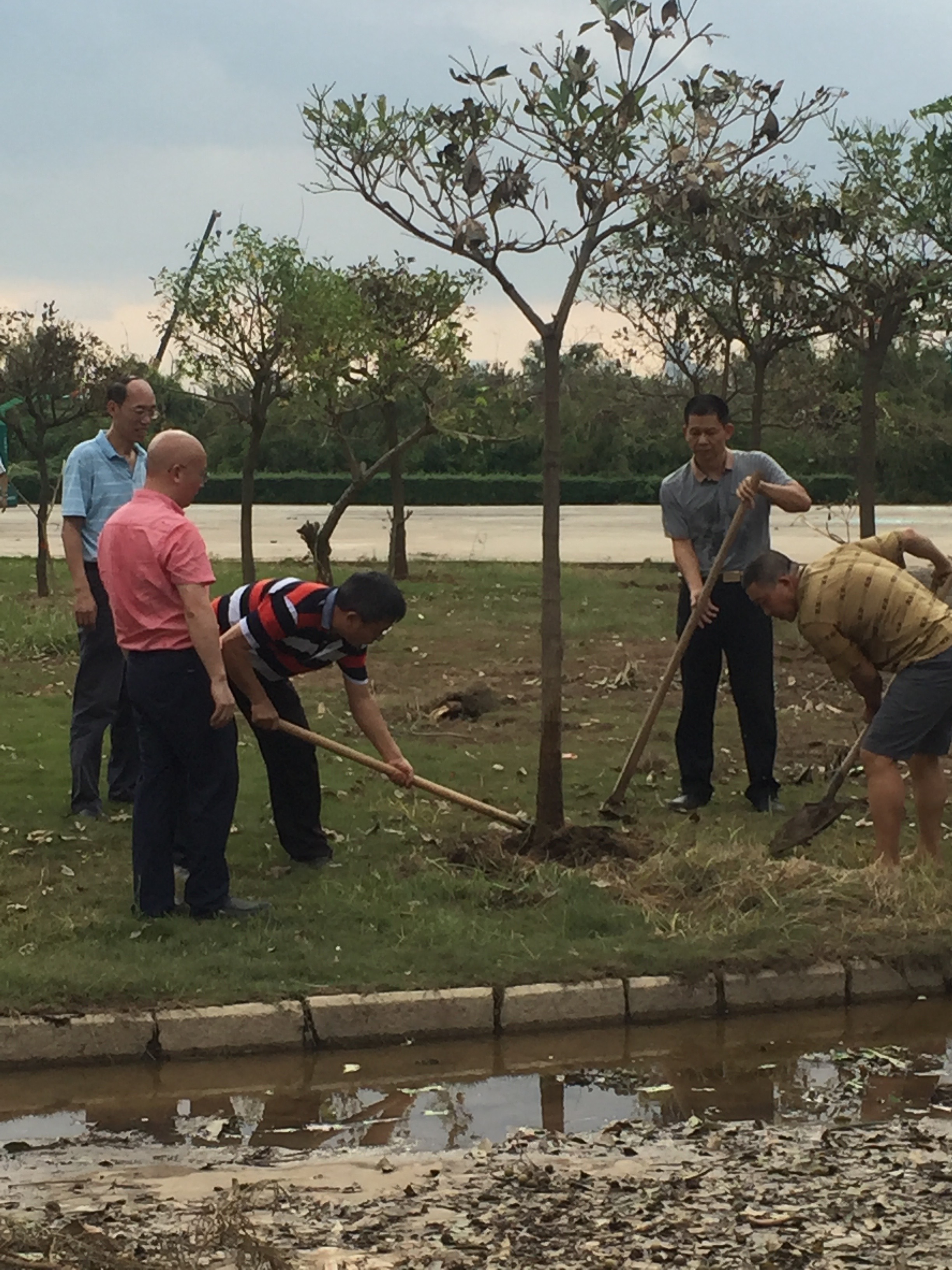You know, whenever there is a natural disaster we always see real-time pictures and video over the drama that it wrought. But we hardly ever see the after pictures or any of the clean up effort outside of the first few days.
So how does a major natural disaster change a place long term? Seeing as I just lived through “the biggest typhoon of the year” and I’ve been watching it firsthand, I thought I would report.
Now, keep in mind, while it was one of the biggest storms to hit Xiamen in decades, the city was pretty ready for it. Outside of broken signs and a lot of shattered glass, the biggest problem was fallen trees. Not only did tens of thousands of trees fall in the high winds, but they smashed cars and buildings in the process. (Check out my previous blog post for pics on that.)

Xiamen is a gorgeous city with trees serving for more than just aesthetics. They are also necessary to keep things cooler in the unrelenting, sub-tropical climate. Losing them is more of a loss than just eye candy.
Luckily a lot of the trees just toppled right over, which meant their roots and the tree itself was still healthy. If they could be replanted immediately then they could continue to grow.
But first order of business was clearing the roads and sidewalks. China can mobilize large groups of people in a very short time frame and before you knew it there were groups everywhere. The military training in the school stopped immediately as the army guys who were leading it were called to help clean up the city.

Then the students, with no military training anymore, were called to go out in small groups and start cleaning up the campus. In addition different volunteer groups went out (including some foreign teachers who wanted to pitch in). In the expat community word went round for group cleanup days in different locations around the city.


A lot of people chipped in and the main priority, after clearing the roads, was keeping the trees alive. There was a flyer being passed around social media where the government was encouraging people to at least cover the exposed roots of a tree with a blanket or towel and keep it wet, hoping that would be enough to save the tree before it could be re-planted.
Within about two weeks most of the damage had been fixed as best as possible. A lot of trees were replanted but for some it was too late. They continued to withered and die, and on my campus they went through about a month later and removed the dead trees or branches.

Elsewhere in the city you can still see a lot of missing signs, or some crazy bent metal on the sides of buildings. It doesn’t seem to bother anyone and I think it will be slow to fix. It’s been a few months now and while my coach fixed the doors in his badminton courts, he still hasn’t gotten a new sign (his old one was destroyed).

But the saddest, and most obvious loss is the trees. The ones that are still standing lost a lot of their branches and the sad little top-less trees are a reminder that the storm happened. Even when they were able to save the trees, the roots are now weak, and barely in the soil. So each tree has a little bamboo trio around it to keep it standing tall. Though if we get another typhoon they will be knocked down easily.
Also, more selfishly, waiting at the bus stop now SUCKS. There used to be one tree, a big one, and everyone would kinda gather under it waiting for the bus. Now there is nothing and the heat, mixed with the busy road and the sidewalk, make it pretty unbearable to wait for the bus (and this is in October, I can’t imagine how horrible July will be.) I felt like I was almost gonna pass out the other day, that’s how hot and unrelenting the sun was in OCTOBER. And there is no place within walking distance to stand, not even a store awning or anything.

But considering the storm didn’t kill anyone here, or topple any major structures I think that’s a small price to pay. We have had a few typhoons since then, but they have hit Taiwan first, or gone further south, and all we’ve had was a bit of rain and wind. The sad empty trees have even started sprouting new green leaves thanks to Xiamen’s ideal hot and humid climate.




That’s the saddest, most lingering part of any disaster, I think — the trees. At least in China they try and replant them. Here, they just haul our the chainsaws.
We are missing quite a few of our trees here in Hainan as well after our recent hit from Typhoon Sarika, although not nearly as many as when Super Typhoon Rammasun hit us directly several summers ago. Hope yours will be back to providing shade and coolness by Spring!
It’s good to hear how quickly and efficiently Xiamen cleans up after a typhoon.
I had never experienced a typhoon until we moved to the Philippines. Fortunately, my Xiamen-born husband knew exactly what to do. Inside the house, we pushed the furniture away from the windows. (The windows were jalousies, so they didn’t close all the way.) We rolled up carpets and Chinese scrolls and took down paintings and photos. We prepared flash lights and candles and filled tubs with water.
The Philippines is hit with a record number of typhoons every year, but Manila usually receives only a glancing blow because the typhoons originate in the Pacific and Manila is on the west side of the Luzon facing the South China Sea. So usually all our typhoon preparation was overkill.